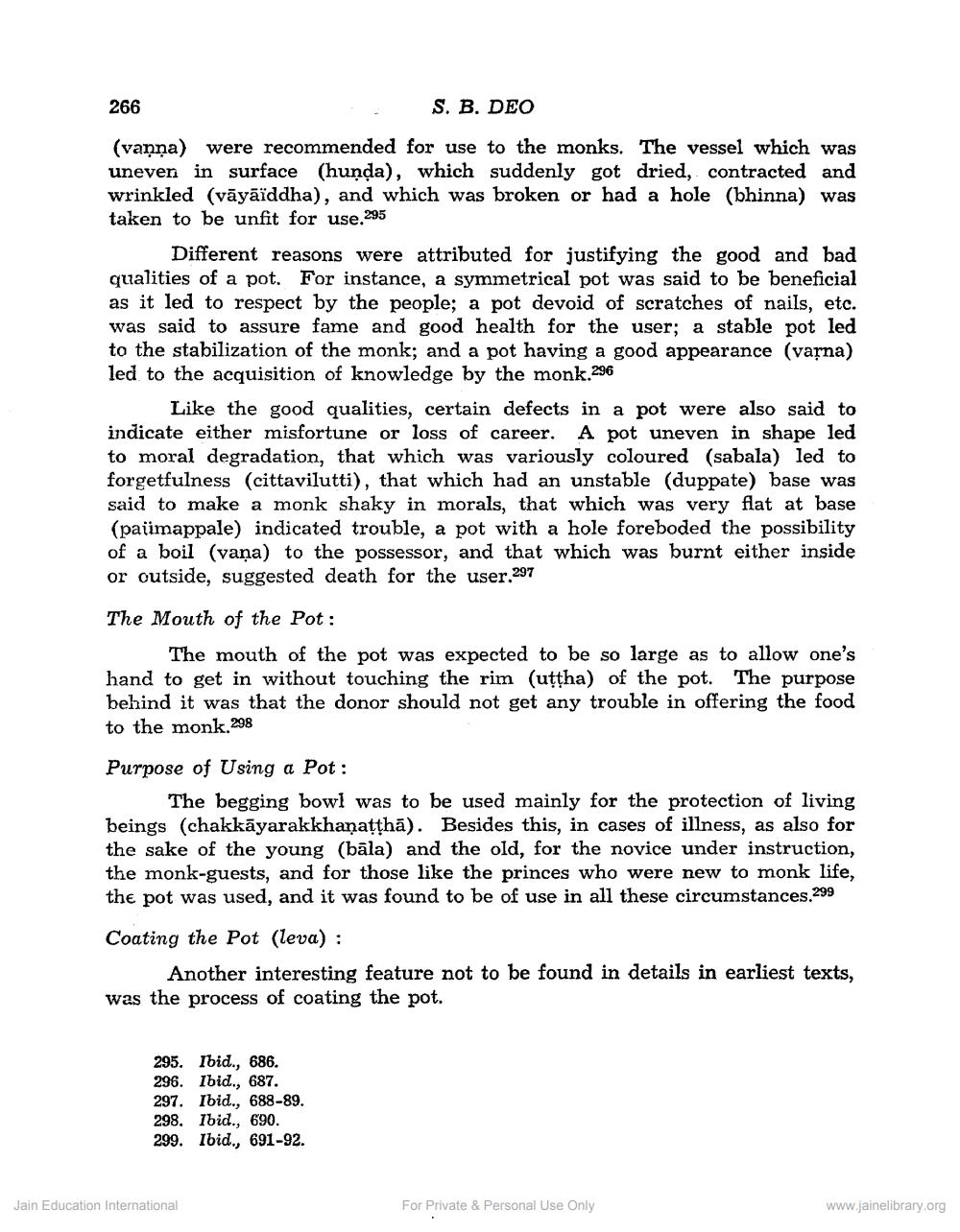________________
266
S. B. DEO
(vanna) were recommended for use to the monks. The vessel which was uneven in surface (hunda), which suddenly got dried, contracted and wrinkled (vāyāïddha), and which was broken or had a hole (bhinna) was taken to be unfit for use 295
Different reasons were attributed for justifying the good and bad qualities of a pot. For instance, a symmetrical pot was said to be beneficial as it led to respect by the people; a pot devoid of scratches of nails, etc. was said to assure fame and good health for the user; a stable pot led to the stabilization of the monk; and a pot having a good appearance (varna) led to the acquisition of knowledge by the monk.296
Like the good qualities, certain defects in a pot were also said to indicate either misfortune or loss of career. A pot uneven in shape led to moral degradation, that which was variously coloured (sabala) led to forgetfulness (cittavilutti), that which had an unstable (duppate) base was said to make a monk shaky in morals, that which was very flat at base (paümappale) indicated trouble, a pot with a hole foreboded the possibility of a boil (vaņa) to the possessor, and that which was burnt either inside or outside, suggested death for the user.297
The Mouth of the Pot:
The mouth of the pot was expected to be so large as to allow one's hand to get in without touching the rim (uttha) of the pot. The purpose behind it was that the donor should not get any trouble in offering the food to the monk.298
Purpose of Using a Pot:
The begging bowl was to be used mainly for the protection of living beings (chakkāyarakkhaṇatthā). Besides this, in cases of illness, as also for the sake of the young (bāla) and the old, for the novice under instruction, the monk-guests, and for those like the princes who were new to monk life, the pot was used, and it was found to be of use in all these circumstances.299
Coating the Pot (leva):
Another interesting feature not to be found in details in earliest texts, was the process of coating the pot.
295. Ibid., 686. 296. Ibid., 687. 297. Ibid., 688-89. 298. Ibid., 690. 299. Ibid., 691-92.
Jain Education International
For Private & Personal Use Only
www.jainelibrary.org




